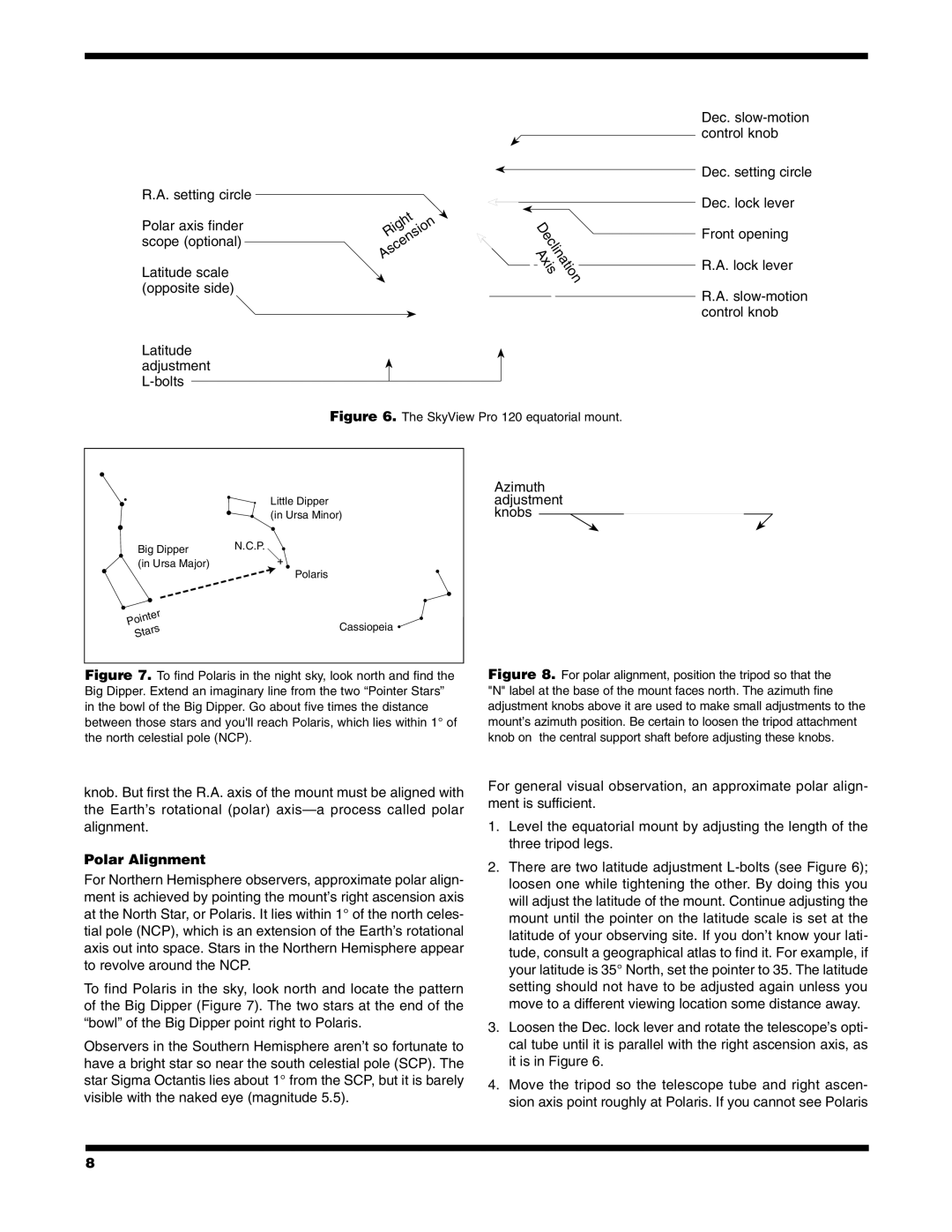PRO 120 EQ specifications
The Orion PRO 120 EQ is a remarkable telescope designed for both amateur astronomers and seasoned enthusiasts. This telescope offers a perfect balance of performance, features, and affordability, making it an excellent choice for those looking to explore the wonders of the night sky.One of the standout features of the Orion PRO 120 EQ is its 120mm aperture. This generous opening allows for an impressive amount of light to enter the telescope, enabling users to observe faint celestial objects with clarity. Whether observing craters on the Moon or distant galaxies, the optics deliver bright and sharp images. The focal length of 1000mm gives a versatile range for planetary and deep-sky observations, ensuring that users can explore various astronomical phenomena.
The telescope comes equipped with a sturdy equatorial mount, providing smooth and accurate tracking of celestial objects. This mount is essential for long exposure astrophotography as it allows for precise movements to follow objects as they traverse the night sky. The mount also features slow-motion controls, making it easy for users to make fine adjustments and focus on their targets.
The Orion PRO 120 EQ is designed with user-friendliness in mind. It includes a 1.25-inch focus mechanism compatible with various eyepieces and accessories, allowing for customization to enhance the observing experience. The telescope's optical design features fully multi-coated optics, which help to increase light transmission and reduce glare, ensuring vibrant images with high contrast.
Durability is another key characteristic of the Orion PRO 120 EQ. Its robust construction ensures stability during observations, and the compact size makes it relatively easy to transport, whether setting up in the backyard or heading to a dark-sky site. The telescope comes with a set of sturdy accessories, including a finderscope and a set of quality eyepieces, further enhancing its usability right out of the box.
Overall, the Orion PRO 120 EQ is a versatile telescope that excels in both beginner and advanced applications. Its combination of a large aperture, quality optics, and reliable mount makes it a fantastic choice for anyone looking to delve into the vast universe, making every stargazing session a memorable experience.

